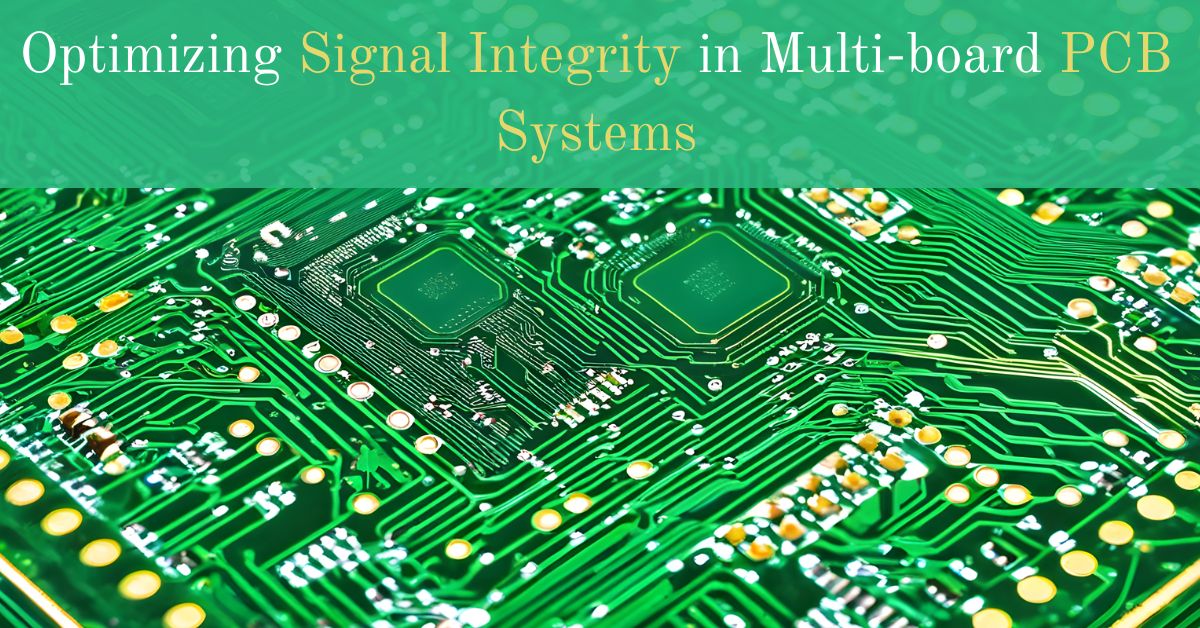In the realm of advanced electronics, the demand for complex and compact designs has given rise to multiboard PCB systems. These interconnected systems, which offer enhanced functionality, come with the challenge of maintaining optimal signal integrity across multiple boards. Signal integrity, crucial for reliable data transmission, requires careful consideration and optimization in multiboard configurations, emphasizing the importance of specialized PCB design services.
Understanding Signal Integrity:
Signal integrity refers to the reliability of electrical signals as they travel through a circuit. In multi-board PCB systems, maintaining signal integrity becomes intricate due to the interconnections between different boards. Factors such as signal distortion, crosstalk, and impedance mismatches can significantly impact the overall performance of the system.
Impedance Matching:
One key aspect of optimizing signal integrity in multiboard PCBs is ensuring impedance matching. Impedance mismatches can lead to signal reflections and distortions, affecting the quality of the transmitted signals. Engineers must carefully design and configure transmission lines to match the impedance across boards, minimizing signal reflections and maintaining a consistent signal quality.
Controlled Crosstalk:
Crosstalk, the undesired coupling of signals between adjacent traces, becomes a critical concern in multiboard systems. To optimize signal integrity, engineers employ techniques such as controlled spacing between traces, shielding, and differential signaling, utilizing tools like OrCAD PCB Designer. These measures help mitigate crosstalk, ensuring that signals remain distinct and interference-free, even in densely populated multiboard configurations.
High-Frequency Considerations:
In multiboard designs operating at high frequencies, signal integrity becomes even more challenging. At higher frequencies, transmission lines exhibit behaviors such as skin effect and dielectric losses. Engineers must account for these factors in their designs, choosing appropriate materials and configurations to minimize signal degradation.
Signal Routing and Length Matching:
Efficient signal routing is crucial for maintaining signal integrity across multiple boards. Engineers carefully plan and optimize signal paths, considering the length of traces. Length matching is essential to prevent signal skew, especially in high-speed designs. Advanced routing techniques, including length tuning and matched delay, help synchronize signals across different boards.
Grounding Strategies:
Effective grounding is a fundamental aspect of signal integrity. In multiboard systems, establishing a robust grounding strategy is imperative to minimize ground loops and ensure a stable reference for signals. Engineers employ techniques such as star grounding and dedicated ground planes, with tools like Allegro PCB, to optimize the grounding structure, reducing the risk of noise and signal distortion.
Simulation and Analysis Tools:
Simulation and analysis tools play a pivotal role in optimizing signal integrity in multiboard PCB systems. Engineers utilize tools such as SPICE simulations and electromagnetic field solvers to model and analyze signal behavior. These tools aid in predicting and mitigating potential issues before the physical prototyping stage, saving time and resources.
Conclusion:
In the complex landscape of multiboard PCB systems, optimizing signal integrity is a multidimensional challenge. Engineers must navigate impedance matching, crosstalk, high-frequency considerations, signal routing, grounding, and utilize advanced simulation tools, including PCB layout services, to ensure reliable data transmission. By addressing these aspects with precision and expertise, designers can unlock the full potential of multiboard configurations, delivering robust and high-performance electronic systems to meet the demands of modern technology.



